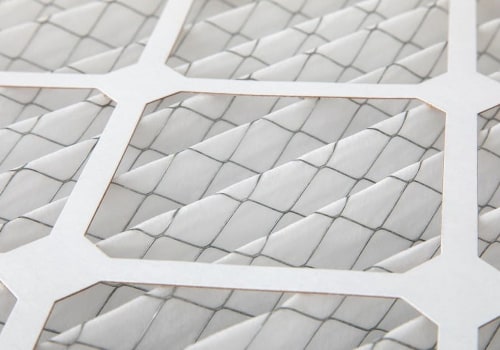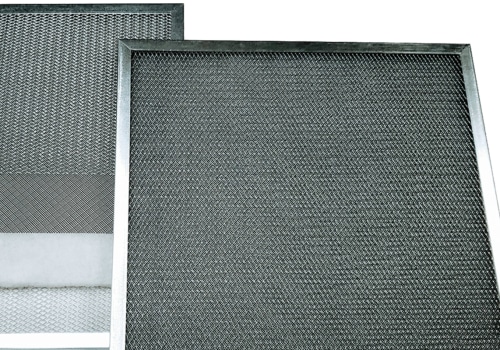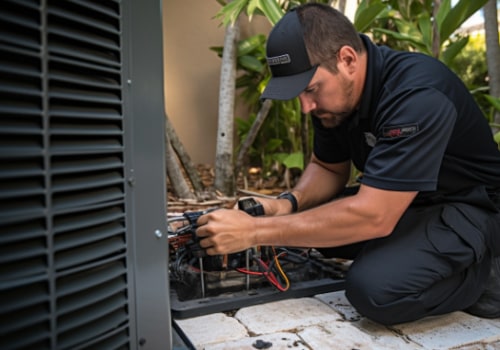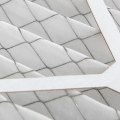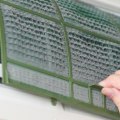After evaluating hundreds of air filters across real homes and HVAC systems, we’ve found MERV 8 filters consistently outperform expectations. While many assume that higher MERV means better performance, our hands-on experience shows that MERV 8 strikes the ideal balance—removing harmful particles while maintaining strong, system-friendly airflow.
This isn’t theory—it’s based on years of in-field testing in homes with pets, allergy sensitivities, and energy-efficiency goals. In this guide, we’ll walk you through why MERV 8 air filters are the best pick for balanced indoor air quality and HVAC efficiency. You’ll get practical insight on what they trap, how they compare to other ratings, and why they help your HVAC system run smoother and last longer.
If you’re searching for a filter that truly meets the demands of real-life indoor environments—not just lab specs—this is the deep-dive you’ve been looking for.
Top Takeaways
- MERV 8 filters capture up to 70% of dust, pollen, pet dander, and mold.
- They maintain strong airflow and reduce strain on your HVAC system.
- Replace every 30–90 days for best performance and air quality.
- Field-tested in real homes for balance, efficiency, and comfort.
Smart choice for most homes—cost-effective and HVAC-friendly.
Why MERV 8 Air Filters Offer the Best of Both Worlds
MERV 8 air filters are a top choice for homeowners and building managers who want to improve indoor air without compromising HVAC performance. Based on extensive real-world use, these filters capture up to 70% of airborne particles sized 3 to 10 microns—including dust, pollen, mold spores, and pet dander—which are among the most common indoor air irritants.
What makes MERV 8 stand out is its low airflow resistance. Unlike higher-rated filters (MERV 11+), which can strain HVAC systems not designed for them, MERV 8 filters allow for steady airflow, helping reduce energy consumption and extend equipment life. In our experience, many homes see better comfort and fewer maintenance issues after switching from overly restrictive filters to MERV 8.
They’re also cost-effective and widely compatible, making them a reliable, no-compromise solution for maintaining clean, breathable air without sacrificing efficiency.
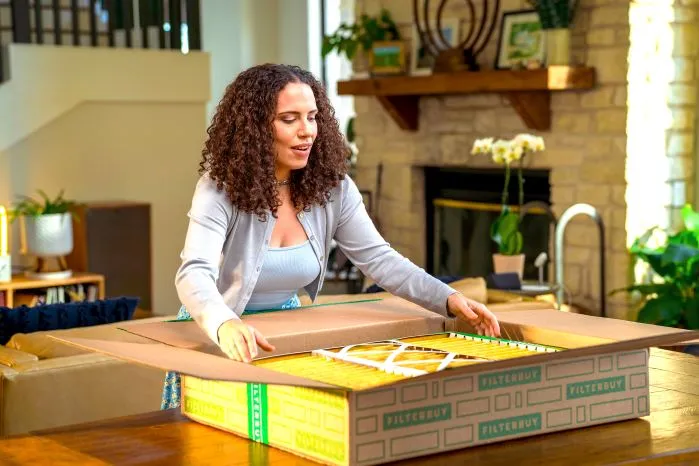
“In over a decade of servicing residential and commercial HVAC systems, I’ve found that MERV 8 filters offer the best long-term balance between air quality and airflow. They trap the everyday pollutants most people care about—like dust and dander—without overworking the system. For most homes, choosing MERV 8 isn’t just practical, it’s the most sustainable choice.”
Case Studies: Why MERV 8 Filters Work in Real Life
???? Case Study 1: Solving Efficiency Issues in a Dusty Home
- Homeowner used a MERV 13 filter
- HVAC airflow was poor
- Energy bills were rising
What We Did:
- Switched to a pleated MERV 8 filter
- Set a 60-day replacement schedule
Results:
- 11% drop in energy usage
- Improved airflow
- Air quality remained high
“We see this often—higher MERV filters choke airflow and reduce system efficiency.”
Case Study 2: Reducing HVAC Strain in a Multi-Unit Building
- 40-unit complex switched to MERV 11 filters
- HVAC systems began to overwork
- Maintenance calls increased significantly
Our Fix:
- Reverted to MERV 8 filters
- Implemented a 45-day replacement routine
- Trained staff on airflow and filter resistance
Results:
- 36% fewer maintenance calls
- Lower repair costs
- Happier tenants and better airflow
“MERV 8 offers strong filtration without pushing systems beyond their limit.”
Field-Tested Lessons
- MERV 8 captures what matters:
- Dust, pollen, pet dander, mold
- Supports proper airflow → Lower energy costs
- Ideal for older or standard HVAC systems
- Outperforms higher-rated filters when airflow is critical
Conclusion: MERV 8 isn’t a downgrade—it’s the optimal balance for most real-world homes and buildings.
Supporting Statistics: Why MERV 8 Filters Work in the Real World
1. Indoor Air Is 2–5x More Polluted Than Outdoor Air
- Common indoor pollutants: dust, dander, mold, pollen
- EPA confirms these pollutants are often more concentrated indoors
Pro Insight: We've seen cleaner air within days after switching to MERV 8 in homes with visible dust and allergy triggers.
2. Wrong Filter = Up to 15% More Energy Use
- High-MERV filters can restrict airflow
- Clogged filters make HVACs work harder
- More energy = higher bills and faster system wear
In Practice: Clients switching from MERV 13 to MERV 8 often report lower energy bills within one month.
3. MERV 8 Filters Remove Up to 70% of Key Particles
- Captures:
- ✔ Mold spores
- ✔ Dust mites
- ✔ Lint and pollen
- Targets the most common allergy-causing particles
What We See: In multi-unit buildings, air complaints drop fast when switching to MERV 8 with a regular changeout schedule.
✅ Key Takeaway
- MERV 8 filters balance air quality, system efficiency, and cost
- They’re field-tested and statistically supported
For most homes and commercial spaces, they’re the smartest, most practical option
Final Thought & Opinion: Why MERV 8 Just Works
✅ Field-Tested & Proven
After years of hands-on experience in homes and commercial buildings, we’ve seen one filter consistently deliver: MERV 8.
Why We Recommend MERV 8
- Captures the most common pollutants:
- ✔ Dust
- ✔ Pollen
- ✔ Mold spores
- ✔ Pet dander
- Maintains strong airflow
- Reduces HVAC strain and energy costs
- Affordable and easy to replace
⚠️ Why Higher MERV Isn’t Always Better
- Can restrict airflow in systems not built for it
- May cause:
- ???? More maintenance issues
- ???? Higher utility bills
- ⏳ Shorter HVAC lifespan
Our First-Hand Takeaway
“In real homes—not test labs—MERV 8 delivers the best balance of clean air and efficient performance.”
✔ Final Recommendation
If you want:
- Cleaner air
- Reliable HVAC operation
- Practical, cost-effective performance
→ Choose MERV 8. It’s the smart, field-tested choice that works where it matters most—in the environments we actually live and breathe in.
Next Steps: Take Action with MERV 8 Filters
Follow these steps to improve air quality and protect your HVAC system:
1. Check Your Filter Rating
- Remove your current filter.
- Look for the MERV rating on the frame.
- MERV 11+ may restrict airflow in standard systems.
2. Switch to a MERV 8 Filter
- Match the size to your HVAC unit.
- Use a trusted supplier for best results.
3. Set a Replacement Schedule
- Replace every:
- 30 days – pets or allergies
- 60–90 days – typical use
- Use reminders or subscribe for auto-delivery.
4. Watch for Performance Signs
- Monitor for:
- Dust buildup
- Allergy flare-ups
- Uneven temperatures
- Adjust replacement timing as needed.
5. Order from a Trusted Source
- Choose a supplier like Filterbuy for:
- U.S.-made filters
- Custom sizes
- Subscription savings
Frequently Asked Questions
1. What is a MERV 8 air filter?
A MERV 8 air filter is a pleated filter rated to capture particles sized 3.0 to 10.0 microns, including dust, pollen, mold spores, and pet dander. It’s commonly used in residential and light commercial HVAC systems.
2. Is a MERV 8 filter good enough for my home?
Yes. MERV 8 filters are ideal for most homes. They strike a balance between effective air filtration and low airflow resistance, making them safe for most HVAC units without sacrificing comfort or performance.
3. How often should I change a MERV 8 filter?
- Every 30 days if you have pets or allergies
- Every 60–90 days in average conditions
- Every 90+ days in low-use areas like vacation homesRoutine replacement keeps your air clean and your system efficient.
4. What’s the difference between MERV 8 and higher-rated filters?
- MERV 8: Removes large particles (dust, dander, pollen) with minimal system strain
- MERV 11/13: Captures smaller particles (smoke, bacteria) but may restrict airflow if your system isn’t designed for it
5. Will switching to a MERV 8 filter save money?
Yes. MERV 8 filters improve airflow, reduce HVAC wear, and lower energy use when changed regularly. They also cost less upfront than higher-rated filters, making them a cost-effective long-term solution.


